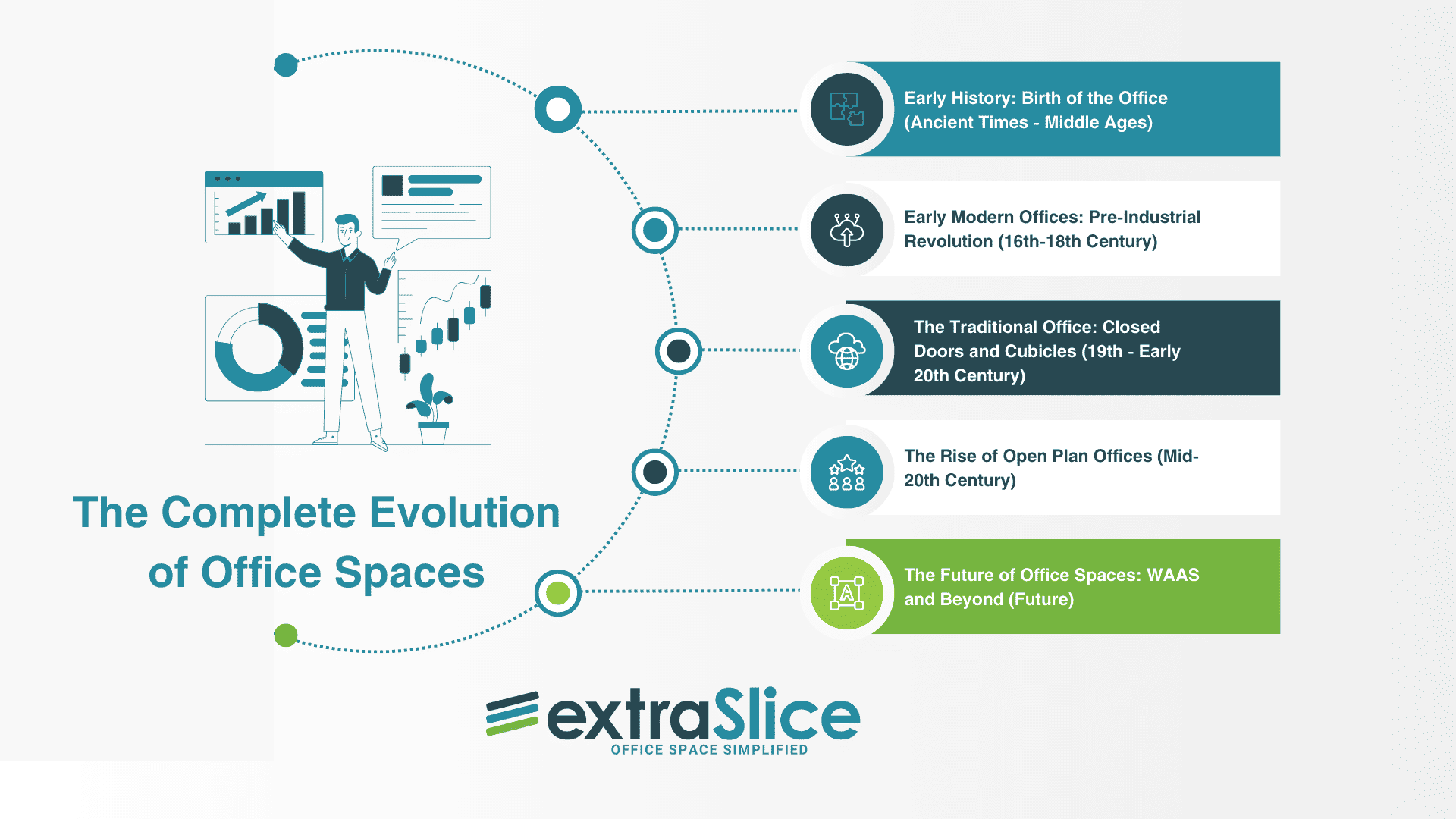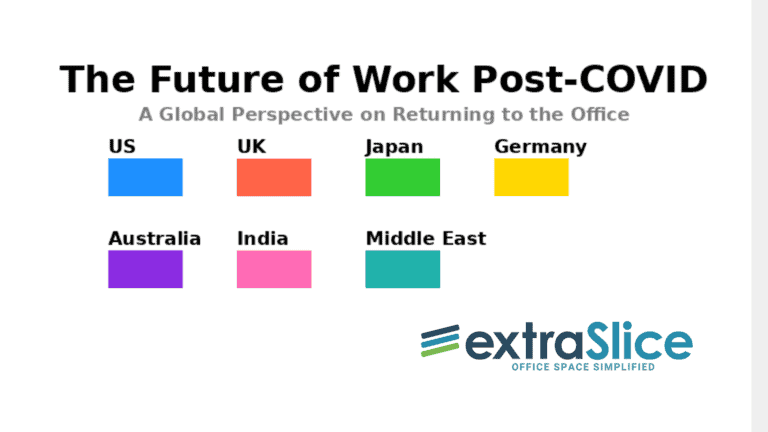Introduction
The concept of office spaces has evolved significantly throughout history, mirroring the transformations in work culture, technology, and societal norms. From the early, rudimentary offices of the past to the modern, tech-savvy Workplace as a Service (WAAS) solutions, this blog will take you on a comprehensive journey through the history and evolution of office spaces.
Early History: Birth of the Office (Ancient Times – Middle Ages)
The idea of offices can be traced back to ancient civilizations, where scribes and record-keepers worked in dedicated spaces. However, it was during the Middle Ages when the first structured office environments emerged. Monasteries had scriptoria where monks copied manuscripts, and early trade guilds established offices to conduct their business affairs. These spaces were functional but often devoid of the modern amenities we associate with offices today.
Early Modern Offices: Pre-Industrial Revolution (16th-18th Century)
As the world transitioned into the early modern period, various organizations, including government offices and trading companies, established more structured work environments. Desks, paper, and inkwells became common features of these early offices. Work was manual, involving meticulous record-keeping and correspondence.
The Traditional Office: Closed Doors and Cubicles (19th – Early 20th Century)
The 19th and early 20th centuries saw the emergence of the traditional office with private, walled offices and hierarchical structures. Closed-door offices were reserved for managers and executives, while rows of cubicles housed clerks and employees working on administrative tasks. Privacy and a clear hierarchy were paramount in these early office spaces.
The Rise of Open Plan Offices (Mid-20th Century)
The mid-20th century brought a shift towards open plan offices. Cubicles replaced private offices in an attempt to foster collaboration and communication among employees. However, this transition came with its own set of challenges, including noise and distractions. While open plan offices encouraged interaction, they sometimes compromised concentration and privacy.
The Office of the 21st Century: Flexibility and Well-Being (21st Century)
In the 21st century, the focus shifted to creating more flexible, wellness-centric office spaces. These environments prioritize employee well-being with features such as ergonomic furniture, natural lighting, and areas designed for relaxation and mindfulness. The goal is to reduce stress and enhance productivity by promoting a healthier, happier workforce.
Technology Integration and Connectivity (Late 20th Century – 21st Century)
As technology advanced, offices became more connected. Smart technology now controls lighting, temperature, and security in modern offices. Video conferencing and collaborative software facilitate remote and in-office work. The digital revolution has made it possible for employees to work from virtually anywhere, reducing the need for a fixed physical office.
The Advent of Workplace as a Service (WAAS) (21st Century)
Workplace as a Service (WAAS) is the latest development in the world of office spaces. WAAS provides a flexible, all-encompassing solution for companies. It offers services such as flexible leasing terms, space customization, technology integration, and management of the office environment. WAAS providers give companies the opportunity to create tailored workspaces that adapt to the ever-changing needs of their employees.
The Future of Office Spaces: WAAS and Beyond (Future)
The future of office spaces is likely to be driven by a combination of factors, including evolving work models, technology, and a focus on employee well-being. WAAS represents a significant shift in how companies approach their physical office spaces, offering a solution that is more adaptable, cost-effective, and employee-centric. (OpenAI. (2022). ChatGPT (Version GPT-3.5) . Retrieved October 31, 2023)
Conclusion
The evolution of office spaces, from the ancient offices of the past to the rise of WAAS in the present, reflects the dynamic nature of the modern workplace. These spaces are not merely functional environments; they are designed to foster collaboration, creativity, and well-being. As we continue to adapt to new technologies and work models, the office space will remain a constantly evolving environment, shaped by the needs and preferences of the contemporary workforce. WAAS is the latest chapter in this ongoing transformation, and its impact on the future of workspaces is still unfolding.






